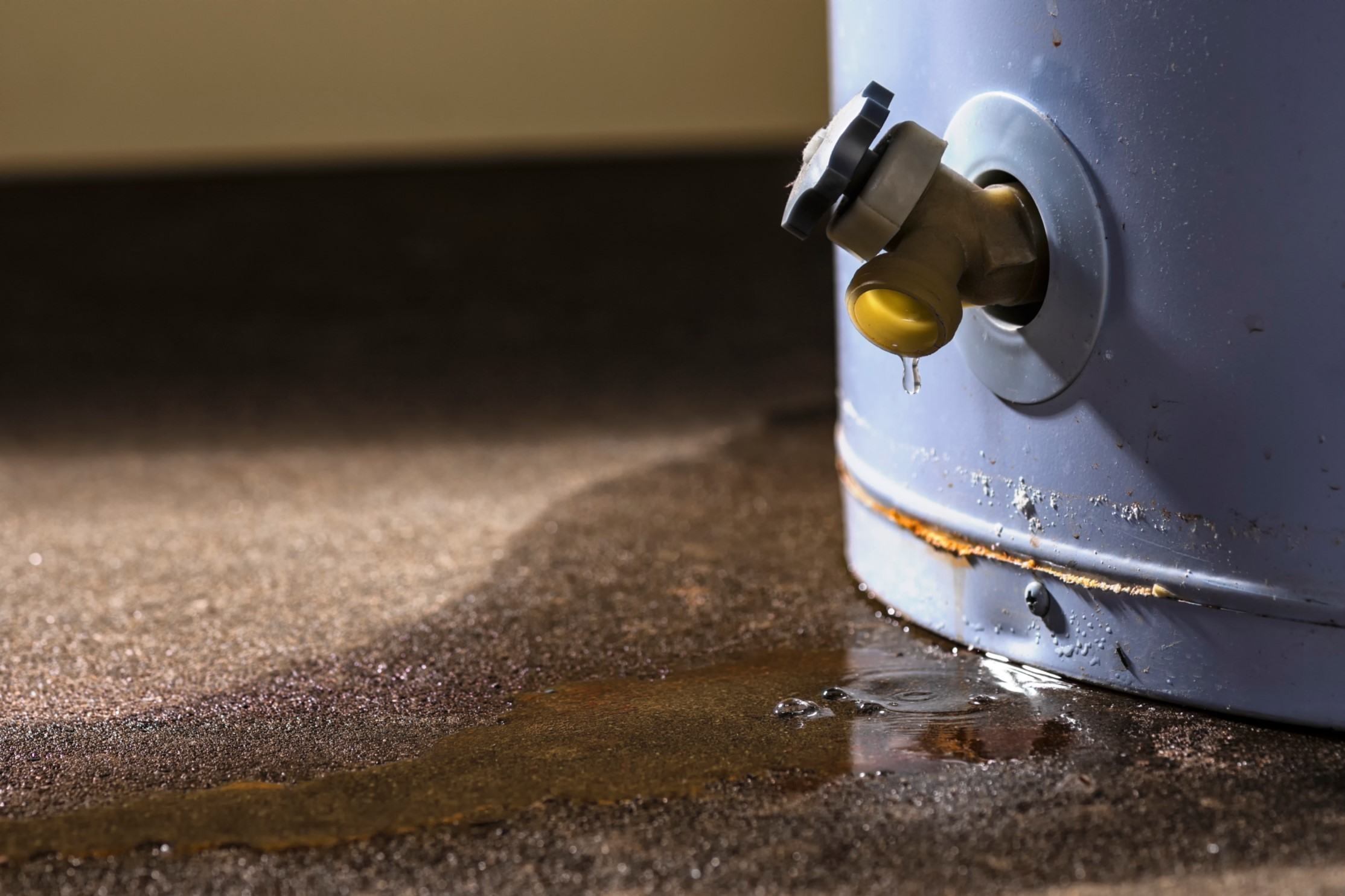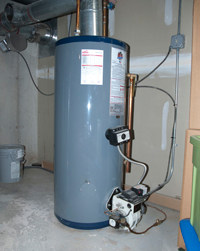Step-by-Step Guide to Maintaining Your Home's Hot Water SystemExpert Guidance on Caring for Your Home's Hot Water System
Step-by-Step Guide to Maintaining Your Home's Hot Water SystemExpert Guidance on Caring for Your Home's Hot Water System
Blog Article
We have encountered this great article relating to What Kind of Maintenance Do Water Heaters Need? listed below on the web and reckoned it made good sense to quickly share it with you on my blog.

Warm water is crucial for daily comfort, whether it's for a revitalizing shower or cleaning dishes. To guarantee your warm water system runs effectively and lasts longer, normal maintenance is vital. This post supplies useful tips and understandings on how to maintain your home's hot water system to prevent interruptions and costly fixings.
Introduction
Keeping your home's hot water system might appear difficult, yet with a few basic steps, you can guarantee it runs smoothly for several years to find. This guide covers every little thing from comprehending your warm water system to DIY upkeep tips and recognizing when to contact specialist help.
Relevance of Keeping Your Hot Water System
Normal maintenance not just prolongs the lifespan of your warm water system however also guarantees it operates successfully. Overlooking upkeep can result in lowered efficiency, greater energy expenses, and also early failure of the system.
Indicators Your Hot Water System Demands Maintenance
Understanding when your warm water system needs focus can avoid significant issues. Watch out for indicators such as inconsistent water temperature, weird noises from the heater, or rustic water.
Recognizing Your Hot Water System
Prior to diving right into maintenance jobs, it's valuable to understand the fundamental elements of your warm water system. Generally, this consists of the hot water heater itself, pipes, anode poles, and temperature level controls.
Regular Monthly Maintenance Tasks
Normal monthly checks can help catch minor problems prior to they escalate.
Flushing the Hot Water Heater
Purging your water heater eliminates debris build-up, improving effectiveness and extending its life.
Monitoring and Replacing Anode Rods
Anode rods stop deterioration inside the tank. Evaluating and replacing them when worn is vital.
Evaluating and Readjusting Temperature Level Settings
Adjusting the temperature setups guarantees ideal efficiency and safety and security.
Do It Yourself Tips for Maintenance
You can perform numerous maintenance tasks yourself to maintain your warm water system in leading problem.
Looking for Leakages
Regularly inspect pipes and links for leakages, as these can bring about water damages and greater expenses.
Evaluating Pressure Relief Valves
Checking the pressure relief valve guarantees it operates appropriately and avoids excessive pressure buildup.
Shielding Pipes
Insulating hot water pipes reduces heat loss and can save energy.
When to Call an Expert
While do it yourself maintenance is helpful, some problems need expert competence.
Complex Concerns Calling For Expert Assistance
Examples consist of major leaks, electric issues, or if your hot water heater is constantly underperforming.
Regular Expert Maintenance Advantages
Professional maintenance can consist of detailed evaluations, tune-ups, and ensuring conformity with safety and security requirements.
Final thought
Regular upkeep of your home's warm water system is necessary for effectiveness, long life, and expense savings. By following these pointers and understanding when to seek professional aid, you can make sure a reliable supply of warm water without unforeseen interruptions.
Water Heater Maintenance: The Basics
Maintaining your water heater will ensure it operates efficiently and has a longer lifespan. Neglecting regular maintenance can lead to costly repairs and an even bigger chunk of your savings if you have to replace it sooner than necessary. But there’s good news: Most water heater maintenance tasks are relatively simple and easy for homeowners with basic DIY skills.
Flush the Water Heater
Over time, sediment and minerals can build up in the tank, reducing its efficiency and potentially causing damage. To flush the tank, turn off the power or gas supply, attach a hose to the drain valve near the bottom and open the valve to drain the water until it runs clear. Ideally, flush the tank annually.
Replace the Anode Rod
The anode rod is a sacrificial metal rod that helps prevent corrosion inside the tank. Inspect and replace it every three to five years or per the manufacturer's recommendation. To replace the anode rod, turn off the power or gas supply, drain a few gallons of water from the tank, unscrew the old rod and replace it with a new one. If the anode rod is significantly corroded or covered in calcium buildup, it's a sign the water heater may need to be replaced soon.
Tune-Up
A yearly tune-up can help identify potential issues and ensure your water heater operates at peak efficiency. This typically involves checking the thermostat, burner assembly (for gas heaters) and any other components specified by the manufacturer. During a tune-up, the technician may also clean the burner and adjust the pilot light (for gas heaters) or examine the heating elements (for electric heaters).
How to Maintain Your Water Heater
Insulate the tank. Insulating the tank can improve energy efficiency and reduce heat loss, saving you money on energy bills. You can purchase precut insulation blankets designed specifically for water heaters or use standard fiberglass insulation wrapped securely around the tank. Check the temperature. The recommended water temperature for most households is around 120 degrees Fahrenheit (49 degrees Celsius). Higher temperatures can increase energy costs and potentially cause scalding. Use a kitchen thermometer to check the temperature at the faucet nearest the water heater. Monitor water pressure. Excessive water pressure can strain the water heater and cause leaks or even tank failure. Install a pressure-reducing valve if necessary. The ideal water pressure range is between 60 and 70 PSI (pounds per square inch). Test the temperature and pressure (T&P) relief valve. The T&P relief valve is a safety feature that releases pressure if the tank gets too hot or the pressure builds up too high. Test it annually by lifting the lever and allowing a small amount of water to release. Replace the valve if it doesn't release water or reseal properly. Check for leaks. Regularly inspect the tank, pipes and fittings for leaks or corrosion. Deal with issues promptly to prevent further damage. Even a small leak can lead to significant water damage over time. Consider a tankless water heater. If your traditional tank-style water heater is nearing the end of its lifespan ( typically 10 years), consider replacing it with a tankless water heater. These units heat water on demand, reducing standby energy losses and potentially saving you money on your energy bills. Schedule professional maintenance. While homeowners can perform many water heater maintenance tasks, it's still a good idea to schedule professional maintenance every few years. A plumber or HVAC technician can thoroughly inspect the unit, identify potential issues and ensure it operates safely and efficiently. https://www.homeserve.com/en-us/blog/home-improvement/hot-water-heater-maintanence/

I stumbled upon that content on How to Maintain a Hot Water Heater in a Few Simple Steps when doing a search on the search engines. Are you aware of someone else who is fascinated about the niche? Please feel free to share it. We take joy in your readership.
Rates Report this page